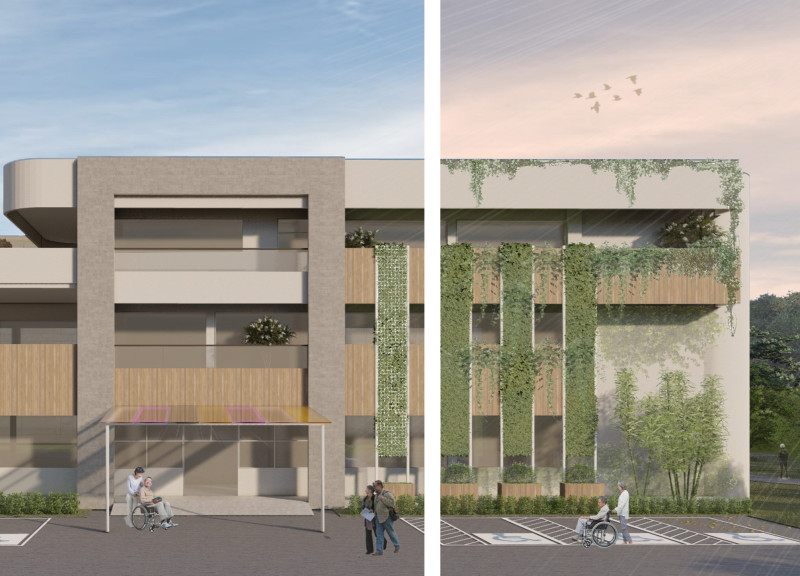5 key facts about this project
The "Tree of Life" design reimagines the former Kaohsiung Municipal Songshan Elementary School, located in Kaohsiung City, Taiwan, which closed in 2017. The goal is to turn this abandoned school into a community center and daycare hospice. This approach addresses the issue of vacant schools in the area, aiming to bring people together and create a supportive environment for local residents.
Community Center and Daycare Hospice
At the heart of the design is a community center that will act as a meeting place for neighborhood residents. Located next to the daycare hospice, the arrangement allows residents to easily engage with patients. During the day, volunteers can spend time with those in the hospice, helping to alleviate feelings of loneliness when families are unavailable. This layout emphasizes the importance of social connections and community involvement.
Functional Spaces Integration
The design includes essential spaces such as therapy rooms, activity halls, communal bedrooms, and a dining area. Former classrooms and playgrounds are revitalized as vibrant community activity spaces and gardens. This multifunctional setup meets the diverse needs of the residents and enhances the overall livability of the surrounding area, making it welcoming for both young people and seniors.
Memorial Trees and Landscaping
A notable feature of the design is the selection of memorial trees that will be planted in dedicated landscaped areas for hospice patients. Each patient can plant their own tree, creating a connection to nature while allowing families to honor their loved ones. This integration not only improves the appearance of the site but also fosters a sense of remembrance and community, enriching the environment for everyone involved.
Continuity of Historical Context
The design carefully integrates the existing structure of the school with new community functions, maintaining its historical character while adapting it for modern use. The combination of old and new features ensures that the school remains an important part of the community. Restored classrooms and shared spaces provide a natural flow, making the building relevant and functional for a new generation, and reinforcing the role of the site within the fabric of local life.



















































